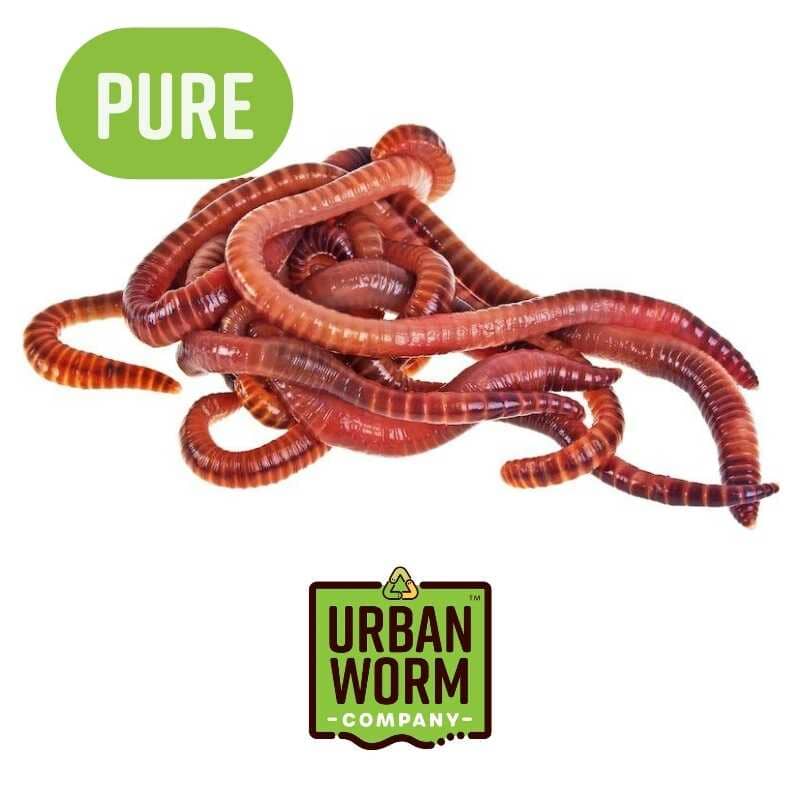The Ultimate Overview to Taking Care Of Red Wigglers in Your Yard
Caring for red wigglers in your yard is an essential part of sustainable composting methods that can considerably enhance soil health and fertility. Understanding their certain habitat demands, nutritional choices, and upkeep requirements is important for cultivating an effective vermicomposting setting.
Understanding Red Wigglers

Red wigglers are defined by their reddish-brown coloration and segmented bodies, which can expand up to four inches in size. They have a high reproductive price, generating cocoons that contain multiple embryos, significantly boosting their population in suitable environments. Where to buy red wigglers. Their physiology enables them to endure numerous wetness levels, although they prosper in moist conditions, preferably in between 60 ° F and 80 ° F.))

Establishing the Environment
Creating an ideal habitat for red wigglers is vital for maximizing their composting performance and overall health. An ideal atmosphere consists of elements such as temperature level, bed linen, and dampness materials. Red wigglers grow in a moist, dark atmosphere with a temperature level array of 55 to 77 levels Fahrenheit. It is very important to monitor these problems closely, as extreme temperature levels can influence their task and reproduction.
When picking a container, pick one that is well-ventilated to enable air blood circulation while protecting against excess moisture loss. Plastic containers, wood boxes, or specialized worm containers are all effective choices. The base of the container ought to have drain holes to stop water build-up, which can result in anaerobic conditions harmful to the worms.
For bed linen, use shredded newspaper, cardboard, or coconut coir, guaranteeing it is not soaked yet moist. This bed linens offers not just as a habitat but likewise as a source of carbon. Consistently examine the moisture level of the bed linen, and include water as required to preserve the ideal dampness. By establishing these conditions, you will certainly develop a successful atmosphere for your red wigglers, urging effective composting and healthier worm populaces.
Picking the Right Food
Choosing the suitable food for red wigglers is crucial for their health and composting effectiveness. These worms prosper on a balanced diet plan that consists of a range of organic products. Suitable food sources are composed of vegetables and fruit scraps, coffee grounds, crushed eggshells, and shredded paper. It is important to prevent meats, milk items, and oily foods, as these can attract parasites and look at this web-site develop unpleasant smells in the composting atmosphere.
Red wigglers like food that is chopped or shredded, as this enhances surface location and promotes much more reliable digestion. In addition, introducing food in small amounts avoids overfeeding, which can cause anaerobic problems damaging to worm health. Keeping track of the worms' eating practices can also offer insights; if the food is eaten rapidly, take into consideration slowly boosting the amount.

Keeping Wetness and Temperature
A well balanced diet is just part of the formula when it concerns making sure the health of red wigglers; keeping correct dampness and temperature level is just as important. Red wigglers grow in a damp environment, ideally in between 70-85 ° F(21-29 ° C) This range supports their metabolic procedures and enhances their capability to decompose raw material successfully.
To keep ideal moisture levels, the bedding must be kept wet, resembling a wrung-out sponge. Inadequate dampness can cause dehydration, creating stress and anxiety or even death in the worms. Alternatively, extreme moisture can create anaerobic problems, which may damage the worms and produce unpleasant odors. Frequently checking the dampness material and changing as required is essential for a growing worm population.
To reduce temperature extremes, think about utilizing insulation for outdoor bins or relocating the container to a shaded or temperature-controlled area. By thoroughly handling both moisture and temperature level, you develop an ideal atmosphere for red wigglers, improving their productivity and general wellness.
Harvesting Compost and Care Tips
Harvesting garden compost from your red wigglers is a fulfilling procedure that not just advantages your yard but additionally boosts the performance of your worm bin - Where to buy red wigglers. To start, select a harvesting technique that matches your arrangement-- whether it's the tray, pyramid, or go to the website standard bin approach. Each technique permits for the splitting up of compost from worms successfully
To gather, you can carefully dig deep into the compost from one side of the container, enabling worms to move to the uninterrupted side. You can utilize light to try these out motivate worms to delve deeper, making it less complicated to accumulate the completed compost.
Care ideas after gathering include renewing your worm container with fresh bed linens and food scraps to maintain a healthy worm population. Guarantee that the wetness and temperature degrees stay optimum, and regularly keep track of for any kind of indications of distress amongst the worms. By adhering to these practices, you'll ensure a sustainable cycle of compost manufacturing that enhances your yard.
Final Thought
In final thought, the successful treatment of red wigglers requires a comprehensive understanding of their environment, dietary demands, and environmental problems. Developing a suitable environment with proper air flow and dampness degrees is important for fostering their health and efficiency.
By establishing these problems, you will certainly produce a flourishing environment for your red wigglers, encouraging reliable composting and healthier worm populations.
The pH level of the food is one more essential aspect; red wigglers thrive in a somewhat acidic to neutral atmosphere.A well balanced diet plan is just component of the equation when it comes to making certain the health of red wigglers; preserving correct moisture and temperature level is equally crucial. By thoroughly taking care of both moisture and temperature level, you create an ideal setting for red wigglers, boosting their productivity and general health.
Collecting garden compost from your red wigglers is a rewarding procedure that not just advantages your yard however additionally boosts the effectiveness of your worm container.